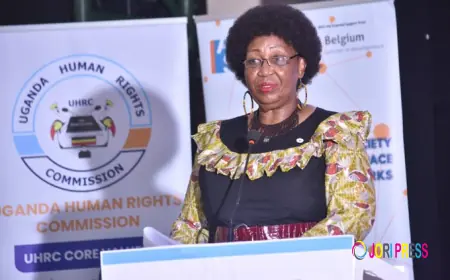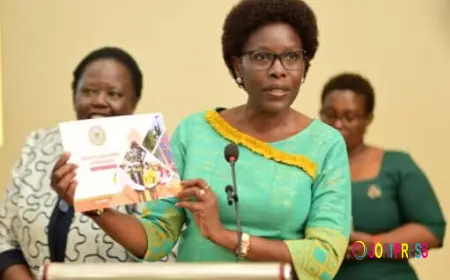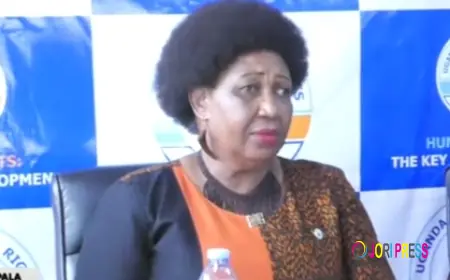Beyond access: How fibre-to-the-home is driving Uganda’s evolving digital economyBeyond access: How fibre-to-the-home is driving Uganda’s evolving digital economy

As East Africa continues its journey toward a digital future, connectivity has emerged not only as a tool for access but also as an enabler of economic transformation and inclusive growth. In Uganda, as in many countries in the region, providing reliable high-speed internet to homes and businesses will play a crucial role in this growth, supported by focused investment in fibre-to-the-home (FTTH) technology.
However, bringing internet access directly to the doorsteps of communities and individuals is no small feat and won’t happen overnight. Uganda’s internet penetration currently stands at around 28%, meaning that most of the country’s 50.7 million people have limited access to digital services, economic opportunities, and educational resources.
The good news is that there is a solution. It will take collaboration between the public and private sectors, a rethinking of network expansion strategies, and a firm commitment to affordability and inclusivity.
FTTH: Laying the digital foundations
Globally, fibre connectivity has been linked to measurable economic impact. This means that Uganda’s young and increasingly digitally aware population has much to gain from fibre access. These benefits include remote work and e-commerce opportunities, online education, entrepreneurial opportunities, and digital business models that were previously impossible due to bandwidth constraints.
As with most evolving fibre ecosystems, Uganda has experienced its share of growing pains. Firstly, the country doesn’t follow an open-access infrastructure model that allows consumers to choose from multiple Internet Service Providers (ISPs) using the same fibre backbone. This has led to duplication of last-mile connectivity, with ISPs deploying separate lines along the same roads or on the same utility poles. Not only is this cost-intensive for providers, but it also causes environmental clutter and slows down rollout timelines. This calls for a more collaborative infrastructure-sharing model. By consolidating efforts and investments, as well as sharing infrastructure, we can build more sustainably and extend our reach more quickly, particularly to underserved and rural communities.
Pooling resources to reach the underserved
Secondly, with 72.3 percent of Uganda’s population living in rural, underserved areas, physical deployment of fibre cables and infrastructure is often challenging. In areas where homes may be spaced several kilometres apart, the cost of deploying fibre for a single operator becomes excessive. However, when several ISPs join forces and split the investment, rural FTTH rollout becomes economically feasible. This approach not only accelerates deployment but ensures that connectivity is both accessible and affordable, even in hard-to-reach areas.
Thirdly, for shared infrastructure models to be effective, regulatory frameworks are essential to ensure equitable pricing structures, fairness, and transparency. And finally, public-private partnerships remain key, particularly in more remote areas where infrastructure already exists, or where the government has the reach and resources to create foundations for further development. Technology providers like Liquid Intelligent Technologies (Liquid) can then layer on service provision, innovative solutions, and even skills development and training initiatives.
Liquid’s commitment in action
Liquid has been at the forefront of fibre infrastructure deployment across East Africa, consistently investing in projects that extend connectivity to homes, businesses, and underserved areas. In Uganda, its rollout of reliable fibre services includes major network upgrades between Kenya and Uganda, boosting capacity and enhancing cross-border connectivity.
Looking beyond connectivity to opportunity
Viewed holistically, FTTH isn’t just about faster internet but about complete digital solutions. While fibre rollout remains a priority, providers need to think beyond connectivity to value-added services such as cloud, cyber security, and managed IT solutions, especially for small and medium-sized businesses that form the backbone of the economy.
No single player can close Uganda’s digital divide alone. The future lies in partnerships between technology companies, ISPs, regulators, government, and development partners. Working together, these stakeholders can create an ecosystem that’s not only connected but inclusive, secure, and future-ready.
What's Your Reaction?
 Like
0
Like
0
 Dislike
0
Dislike
0
 Love
0
Love
0
 Funny
0
Funny
0
 Angry
0
Angry
0
 Sad
0
Sad
0
 Wow
0
Wow
0
















































![Introduction ✈98~[(2121)]?~[{0875}] to the Stock market courses](https://joripress.com/uploads/images/202509/image_430x256_68bf0343969fb.webp)




